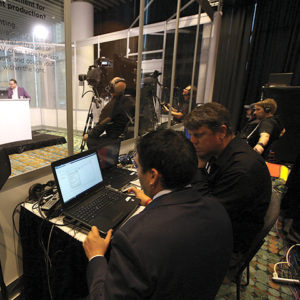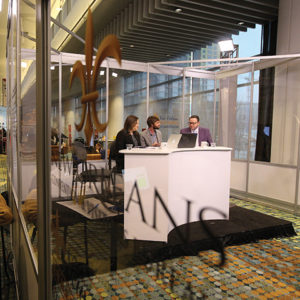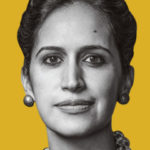
The evolution of PCMA’s Digital Experience Institute (DEI) reflects the evolution of digital events themselves. Originally begun in 2008 as the Virtual Edge Institute, focusing on early virtual programs like webinars, DEI today “supports and contributes to research, education, thought leadership, promotion, and the digital-events community,” according to its website. It also administers the Digital Event Strategist (DES) credential.
In other words, if you want to know anything about digital events, you should talk to DEI. So we did, recently interviewing Vice President and Executive Director Jennifer Kingen Kush, DES, about the current state of the art and possible future of online meetings.
What does DEI’s research show about how prevalent digital events are?
DEI does a benchmark every year, and in the 2016 benchmark, we looked at what the digital footprint was going to be for 2017. And 82 percent [of respondents] said they plan to increase their digital-event footprint.
American Express [Meetings and Events] does a global report, and in their global report in August of 2016 they shared some stats on virtual and hybrid meetings from 2014 to 2017. They said that they represented more than 10 percent of meetings, and they predicted growth in North America and over 15 percent growth in Asia-Pacific in 2017.
Are these digital-only events, hybrid events, or some combination of the two?
It’s a combination. A hybrid is where there’s a face-to-face element, and digital or virtual means that it doesn’t necessarily have a face-to-face component.
What is the state-of-the-art that you’re seeing right now in digital and hybrid events?
From a technology standpoint, mobile has a greatly expanded experience. The online mobile experience on your smartphone — in the past, you had to download apps, you had to do plugins. We’re seeing across technologies that that experience is catching up, so it’s much better. The decrease of mobile apps and plug-ins is making a better online experience.

In regard to what people are using online, engagement is really king. It’s always been around, but I think people are using it in smart and sophisticated ways — using polling, using online text chat where you’re bringing together the audience to collaborate and share their ideas and questions, the use of an on-site [online] emcee like we do with the Mash-Up Studio [at PCMA Convening Leaders].
When this whole space started, it was a shiny new object, right? It was that technology, and how do we make this technology work for us? What’s really happening right now is, it’s all about strategy, and it’s about what kind of strategy can we deliver through this experience for this online audience to be able to provide them value, and to be able to support our business objectives. For a lot of organizations, especially medical organizations, they’re just trying to educate as many people as they can. Or it could be growing your membership and increasing revenues, or creating a legacy plan.
For example, one of our recent DES grads who is based in Berlin was working with an event in Poland — the World Library and Information Congress. They did their first live stream, and they decided to do it online, so they used Facebook, they used YouTube. They live-streamed a couple of their key sessions every day. Their views were over 23,000, so the fact that you have different technology options, instead of just the bells and whistles, means being able to have that flexibility and have that integration.
When you talk about mobile increasingly being a component of digital events, are you talking about how remote attendees interact with the digital program — meaning they’re tuning in on mobile devices as opposed to a desktop or laptop computer?

Yes. We’ve had attendees everywhere. The beauty of it is, it’s making it more accessible. And along with the technology becoming more accessible, to be able to fit the needs of the audience and the needs of the organization, one of the things that I like to look at is how we as consumers are behaving with technology. I find that trends start in the social sphere, before they come to the association or corporate sphere. Here are a few stats that I find interesting about live streaming in your daily life: From 2016 to 2017, 81 percent of internet and mobile audiences watched more video online than they did the previous year, from ’15 to ’16. What are they watching? They’re watching breaking news, which was 56 percent. But then conferences, speakers, and festivals were tied for second. And 67 percent of live-video viewers are more likely to buy a ticket for a concert — which speaks to [DEI] stats, where we ask [online attendees] if they’re more likely to attend [the] face-to-face [meeting], and we always get over 70 percent [who say they are].
So have we finally buried the notion that online events cannibalize face-to-face events?
We have. People are nervous about it, but when you’re looking at the success across the board, that’s proving not to be the case, as DEI showed in our The Power of Digital Events white paper released last year.
Has the increasing use of mobile devices to access this type of content changed how digital-event providers are framing that content? Does it change how they approach pushing it out?
Yes. That’s part of the thing when you’re doing digital events: How do you create the best experience for the end user? And really, it’s just like face-to-face events. You have to design an experience, and you have to design how are [attendees] going to navigate through. How are you going to create that emotional connection, and how are you going to provide them that experience of engaging with others and consuming the information in the right way? When groups in the early days would try to take a face-to-face experience and do a literal translation to that online, that would often fail, because there’s a [further] translation that has to happen.
Are there consistent mistakes that you see organizations making as they are trying to translate their programs into a digital framework?
Yes. One of the first things that they want to know is, what technology? And we usually say that they need to start on strategy and try to define what they want to do first, which is a total flip from how we started in this space, where it was, what’s this technology and what is it going to do to our industry? Now it’s looking at what we’re trying to achieve and how technology can help us.
Another [mistake] is, sometimes groups want to start out big, and they’re focused on the production component. We usually recommend to start small and to really try to focus in on what they’re trying to achieve and what they want their audience to experience. Learn lessons from that, and then expand.
How do you see digital events evolving into the future?
One way I see it changing is that, we’ve only had our smartphones for the last 10 years, and now we do everything on them, right? We do our banking, people find significant others, they search for homes, we do our email, we take pictures. Ten years ago we would have never thought that. I think that they’re going to become integrated into the digital-events space and be part of the experience.
We’re going to keep pushing engagement; it’s going to look different from where we are now. I think two-way communication is going to be expanded. Right now it’s through text, but there are different ways of doing that. For example, last year at the Internet Society’s InterCommunity in September, they had 16 nodes around the world that they were all presenting from, and they could engage with each other, so there was a lot more two-way communication going on. And I think that that’s going to be a way in the future where you can connect people from different locations, so [a digital event is] not just a hybrid coming from the host city out to the rest of the world, but more engagement between.
And then whole AR/VR space — augmented and virtual reality — we’ve been seeing some really interesting things that trade shows and conferences have been doing. Trying to show empathy, for example — so if it’s at a medical event and they want doctors to feel empathy for patients, putting them in an environment that they can in a very real way. Or we saw Rotary [International] over the summer used augmented reality for their international polio effort, trying to get people to [empathize with] their cause. So I think augmented reality is going to be an interesting space that will keep evolving, too.
Read more digital-event stories from our CMP Series “Screen Time.”


